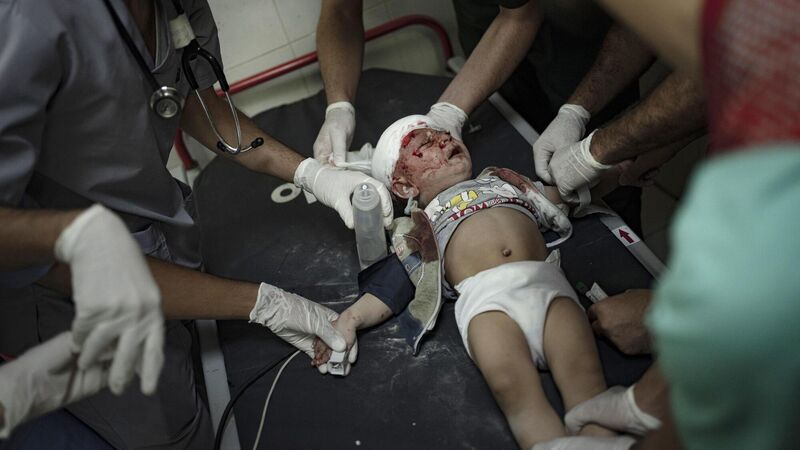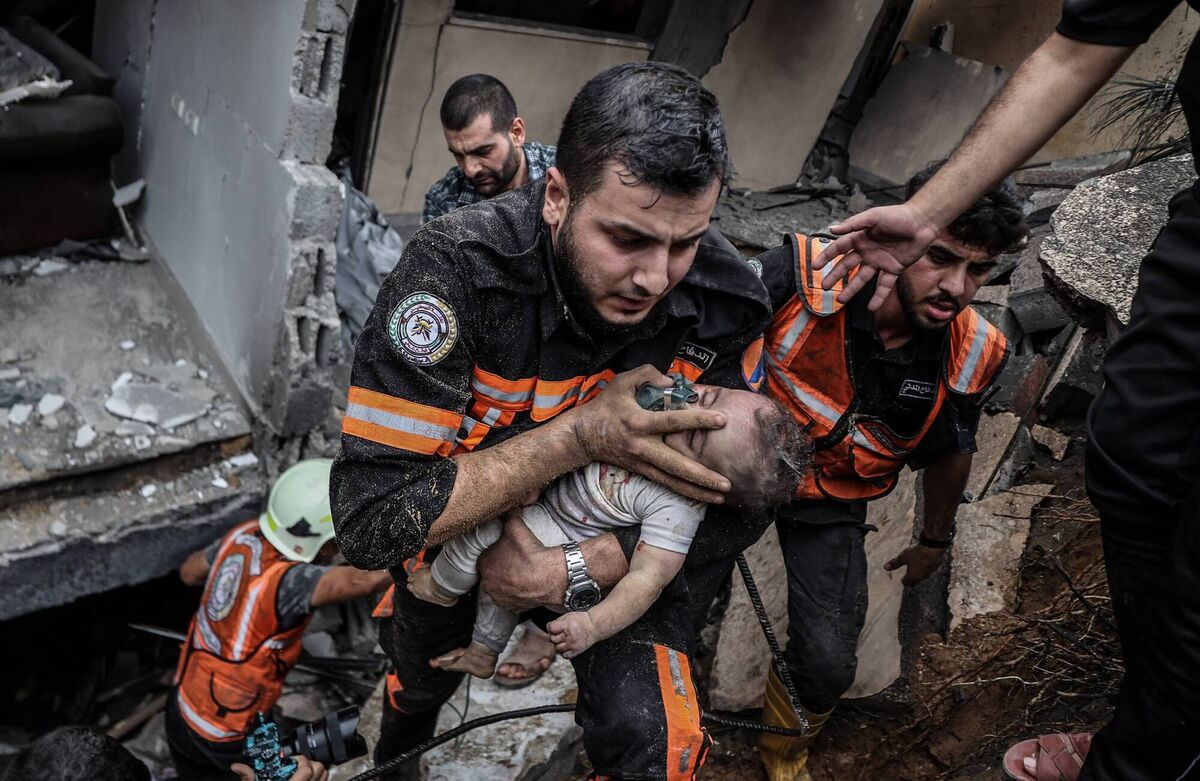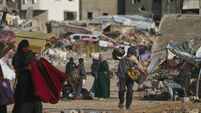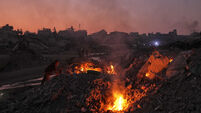Paul Hosford: Seeing dead children on our timelines is traumatic, but how do we avoid becoming desensitised?

Palestinian medics surround a baby wounded in the Israeli bombardment of the Gaza Strip in Khan Younis. Picture: AP
“ I saw a dead baby today/While I was sitting on the toilet/When a colleague sees me later and asks how I am/I’ll tell her fine, and I’ll smile.”
The poem posted to Instagram by the writer Elena M.I Duran is a gut punch and one that is achingly familiar to many people.
If your tendency is to scroll social media aimlessly, as it is for many of us, it’s likely you’ve seen similar in the last three weeks. From the harrowing videos of Hamas attacks on a music festival, to families in their homes following the murder of family members, to the horrors caused by the Israeli retaliation in Gaza, social media’s algorithms have been serving up new definitions of the term doomscrolling.
Part of this is down to an attitude towards moderation which has become looser and more feckless in certain parts of the social media landscape, part is down to a lack of foreign media on the ground in Gaza, and part is down to a wider proliferation of smartphones than in past violence in Israel and Palestine.
But whatever the reason, these horrific images pose a deeper question for us as users and as people.
Firstly, how do we as people take on trauma that is occurring 2,500 miles away? How do we process that? American thanatologist Therese A Rando in 1997 defined “vicarious bereavement” as “the experience of loss and consequent grief and mourning that occurs following the deaths of others not personally known by the mourner”, while in 2015 Dr Pam Ramsden from the Faculty of Social Sciences, University of Bradford, presented to a British Psychology Society conference and said that around a quarter of people were significantly affected by viewing traumatic events, regardless of their degree of separation from them.
“Social media has enabled violent stories and graphic images to be watched by the public in unedited horrific detail. Watching these events and feeling the anguish of those directly experiencing them may impact on our daily lives,” she said.
We know this, I think, deep down. We know that we cannot just pay a visit to another person’s trauma without it seeping in. We are not fully insulated from the pain of a mother who has lost a child purely because we have not experienced the same, even if our understanding of it remains, thankfully, incomplete. But knowing this doesn’t stop the scrolling, even though we know what’s coming and even though we have the option of turning it off.
But should we?
“He didn’t look like the babies I’m used to because his mother and father spoke in a language I don’t understand/no not because I don’t speak Arabic/but because the cries of a grief that deep cannot be known by me.”
In our hands, we all hold the entire content of the internet. There are videos of cats or dissertations on superhero movies and sports highlights. We could look away. We could do literally anything else. But we scroll, knowing what might be shared or re-shared into our timelines. We continue to look for a number of reasons — bias towards negativity, curiosity, genuine concern, but it is important to know the psychological effects of what we take in.
But, at the same time, should we look away? Is it moral? In his book War Porn, photographer Christoph Bangert asks: “How can we refuse to acknowledge a mere representation — a picture — of a horrific event, while other people are forced to live through the horrific event itself?”

If those affected by violence and trauma in Israel and Palestine have to go through it, do we have a right to be squeamish about what’s happening?
A 2014 report by psychiatrist Anthony Feinstein of the Sunnybrook Health Sciences Center in Toronto, found that frequent, repetitive viewing of violent news-related video and other media raises news professionals’ vulnerability to a range of psychological injuries, including anxiety, depression, and post-traumatic stress disorder, but many in the industry understand the contexts and risks of being asked to do so. Searching for photos from a warzone in a photo agency system contains a known risk, but scrolling on a previously safe timeline does not.
But, at the same time, these are real images. That fear is real. That devastation is real. That hurt and anguish is, tragically, all too real.
“They might also see the Dead Baby, see the mourning parents, see the thousands more just like them and realise/that the world exists beyond their own line of sight/and what happens to Them is part of Us/and they might realise that they have to STOP poking at their computer keys/and mourn the baby, the Dead one”.
The visceral nature of what we’re seeing comes in part due to the fact that foreign media is not on the ground in Gaza in many cases, due largely to the danger posed by constant bombardment by Israel. The Committee to Protect Journalists reported this week that 24 journalists are confirmed dead in the conflict: 20 Palestinian, three Israeli, and one Lebanese.
This means that in the vacuum of curated or contextualised photos or videos, citizen journalism becomes all the more pressing and urgent. The mainstream or established media has not been perfect since the outbreak of violence in the area (the confusion in the hours following the Al-Ahli hospital blast is a case in point), but phenomenal work is being done. On Wednesday, the Irish journalist Malachy Browne, who oversees visual investigations for The New York Times, posted a story his team had worked on on the social media site X. It is a stunning piece of work that casts doubt on the US and Israeli belief that the missile which was believed to have hit the hospital last week was fired from Gaza.
Beyond its journalistic merits, it is a piece of work that increases understanding of the situation in an era where statements and claims can fly back and forth in seconds. It is as vital as seeing the horrors that are unfolding.
“I saw a dead baby today/And it was the least I could do/to not look away/To bear witness to unspeakable pain.”
When you see these images, what is your gut reaction? I have no shame in saying that anything involving children shakes me, makes me well up, and makes me squeeze my sons a bit tighter. That, I believe, is a near-universal human reaction.
But there are wider reactions, the urge to share, to like, to disseminate. However, this runs the risk of desensitising us to what is happening, meaning that the reaction we have will only be to worse and worse atrocities as if single lives no longer matter.
But our own sensitivity is nothing to what has happened and continues to happen. There is also the risk that the people in those photos merely become sticks to beat “the other side”, stripping away their humanity.
Should we look away?
Maybe, but whatever we do, we should try to understand and empathise with the humans in the photo and bear witness to their suffering.
CONNECT WITH US TODAY
Be the first to know the latest news and updates
More in this section














